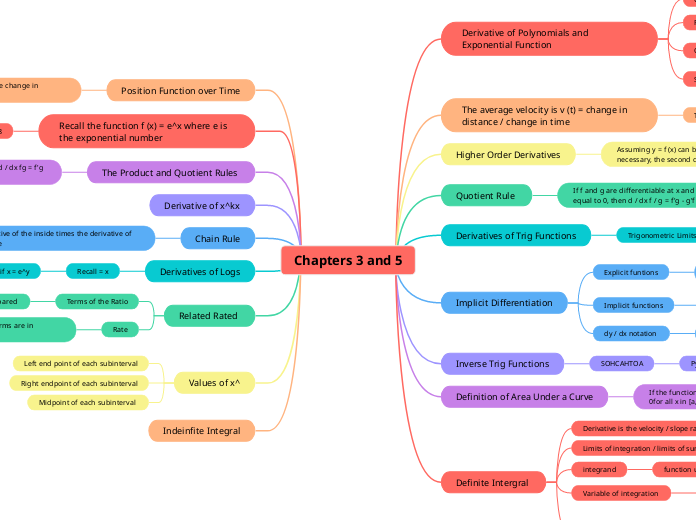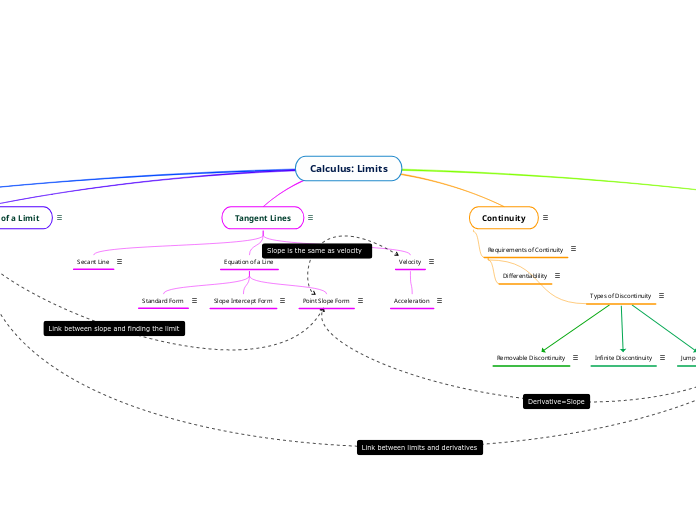Chapters 3 and 5
Indeinfite Integral
Values of x^
Midpoint of each subinterval
Right endpoint of each subinterval
Left end point of each subinterval
Related Rated
Rate
A special ratio in which the two terms are in different untis
Terms of the Ratio
The numbers or measurements being compared
Derivatives of Logs
Recall = x
y = ln x if and only if x = e^y
The domain of ln x (0,infinity)
Chain Rule
the derivative of the inside times the derivative of the outside
Substitute u for g (x)
Derivative of x^kx
The Product and Quotient Rules
If f and g are differentiable at x, then d / dx fg = f'g = g'f
The derivative of the First times the Second plus the derivative of the Second times the First
Recall the function f (x) = e^x where e is the exponential number
e = 2.7182818288
Position Function over Time
Given a position function s (t), the change in position becomes d = rt
Definite Intergral
The Area function/intergral
above represent the Net area
equals TOTAL net area of a function
area below the axis is negation
area aboive the axis is positive
Variable of integration
dx
integrand
function under the integral
Limits of integration / limits of summation
Derivative is the velocity / slope rate of change.
Definition of Area Under a Curve
If the function f is continuous on [a,b] and if f (x) > 0for all x in [a,b], then the area under the curve
Inverse Trig Functions
SOHCAHTOA
Pythagorean Identities
Implicit Differentiation
dy / dx notation
The derivative of y with respects to x
Implicit functions
Equations that are not written in terms of one variable
Some implicit equations cannot be written explicitly
Explicit funtions
Where one variable is defined explicitly in terms of another variable
Derivatives of Trig Functions
Trigonometric Limits: Recall
Quotient Rule
If f and g are differentiable at x and g (x) are not equal to 0, then d / dx f / g = f'g - g'f / g^2
The derivative of the Top times the Bottom minus the derivative of the Bottom times the Top all over the Bottom squared.
Higher Order Derivatives
Assuming y = f (x) can be differentiated as often as necessary, the second derivative of f is f'' (x)
The average velocity is v (t) = change in distance / change in time
This is just the average / slope
s' (t) = v (t)
Derivative of Polynomials and Exponential Function
Sum/Differnece Rule
If f and g are differenetiable at x, then d/dx (f + g)
Constant Multiple Rule
If f is differentiable at x and c is a constant number then d / dx (cf (x)
Power Rule
If n is a any real number, then f (x) = x^n
Constant Rules
If c is a constant number, then f (x) = c









